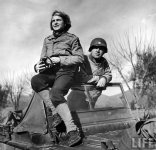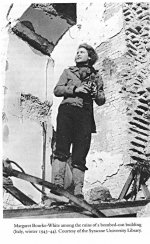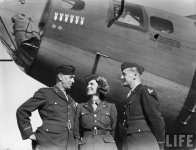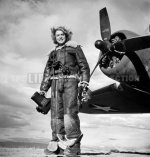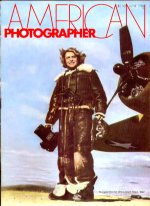PolarBear
Major
- Joined
- Feb 24, 2007
- Messages
- 6,706
This is a photograph of Margaret Bourke-White that I recently came across. While I was at Syracuse University I worked on the Bourke-White collection of papers and photographs, primarily the work she did during WWII while in England,North Africa and Italy. I corresponded with a number of the B-17 pilots she photographed first in England and then in Algeria. These were members of the 97th BG first stationed at Polebrook, England and later Biskra, North Africa. One of those men was Paul Tibbetts whom I interviewed by telephone. In Bourke-White's notes from WWII at SU she ironically mentions that she thought that someday Tibbetts would make a name for himself in heavy bombing. This was when he was still flying B-17s and had not yet become the historic skipper of the Enola ***,probably the ultimate in heavy bombing.
The photo below shows Margaret in her combat photographer uniform. She was the first female correspondent to have uniforms made especially for her. Here she is seen atop a Ford G.P.A. amphibious jeep somewhere on the Italian front.
The photo below shows Margaret in her combat photographer uniform. She was the first female correspondent to have uniforms made especially for her. Here she is seen atop a Ford G.P.A. amphibious jeep somewhere on the Italian front.


